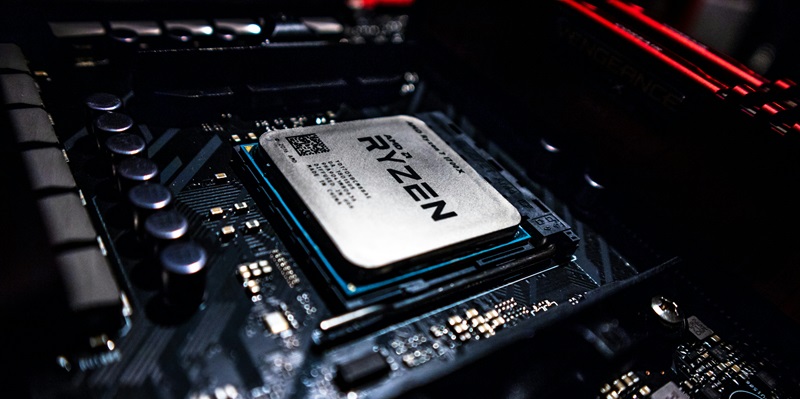AMD appears to be planning a significant refresh of its well-regarded AM4 platform, as recent leaks hint at the development of new, gaming-focused CPUs. Among these developments, the AMD Ryzen 5 5500X3D stands out, promising to bring notable performance upgrades to gaming enthusiasts without necessitating a full hardware overhaul. This newly speculated CPU, revealed through documentation from the Eurasian Economic Commission (EEC), is expected to feature six cores and 12 threads with a substantial 96 MB of L3 cache aimed at optimizing gaming performance. With a design intended to deliver a pronounced boost in gaming capabilities, the Ryzen 5 5500X3D exemplifies AMD’s ongoing commitment to its AM4 platform. This is especially appealing for users seeking to enhance their systems while avoiding the additional investments in newer platforms and DDR5 RAM. The anticipation surrounding the Ryzen 5 5500X3D stems from its potential to offer a seamless upgrade path for cost-conscious gamers.
AMD’s 3D V-Cache Technology and Gaming Performance
A central element fueling the excitement for the Ryzen 5 5500X3D is AMD’s innovative 3D V-Cache technology. By vertically stacking the cache, AMD effectively shortens the data path between CPU cores and the cache, resulting in a significant performance boost in gaming. This technology was previously seen in the Ryzen 7 5700X3D, which demonstrated a substantial 10 to 15% improvement in gaming benchmarks. Reports suggest that similar performance gains can be anticipated for the Ryzen 5 5500X3D. This expected enhancement is particularly pertinent for gamers who often rely on high-speed data retrieval and processing to maintain smooth gameplay and quick response times. The success of this technology in earlier models indicates that AMD’s new CPU could establish itself as a favored choice among gaming communities who are keen on getting the best performance.
The implications of integrating 3D V-Cache technology extend beyond mere gaming improvements, representing a pivotal shift in CPU architecture. This approach spearheaded by AMD provides a glimpse into the future of CPU design, focusing on efficient data management and rapid processing capabilities. By implementing 3D V-Cache technology in the Ryzen 5 5500X3D, AMD not only reinforces its market position but also lays the foundation for future developments across its entire CPU lineup. The technological strides seen in the 5500X3D underscore AMD’s dedication to pushing the boundaries of what is possible with existing platforms, ensuring users benefit from cutting-edge performance without needing to invest heavily in new hardware ecosystems.
Broadening AMD’s CPU Lineup and Market Strategy
The EEC documentation has revealed AMD’s plans to release the Ryzen 5 5500X3D and several Ryzen 8000 series CPUs, including the Ryzen 3 8300G, Ryzen 5 8500G, and Ryzen 5 8400F. This indicates AMD’s strategy to rejuvenate interest in its CPU line. Though the primary focus remains on the Ryzen 5 5500X3D, these new mentions offer a glimpse into AMD’s effort to diversify its offerings. This broad strategy aims to cater to a variety of users, from casual gamers to professional content creators, hence strengthening AMD’s presence across different market segments. By offering tailored solutions that meet specific user needs, AMD ensures its competitiveness.
AMD’s move to bolster the AM4 platform speaks to their strategy of providing incremental performance gains. This approach not only enhances gaming performance but also offers a cost-effective solution by incorporating options within the existing AM4 ecosystem. The proven benefits of 3D V-Cache technology and anticipated performance gains, similar to the Ryzen 7 5700X3D, continue to attract gamers and tech enthusiasts who value performance without transitioning to new platforms. By continually refining and expanding its CPU lineup, AMD shows its understanding of market dynamics and user expectations, positioning itself as a strong competitor in high-performance computing.

